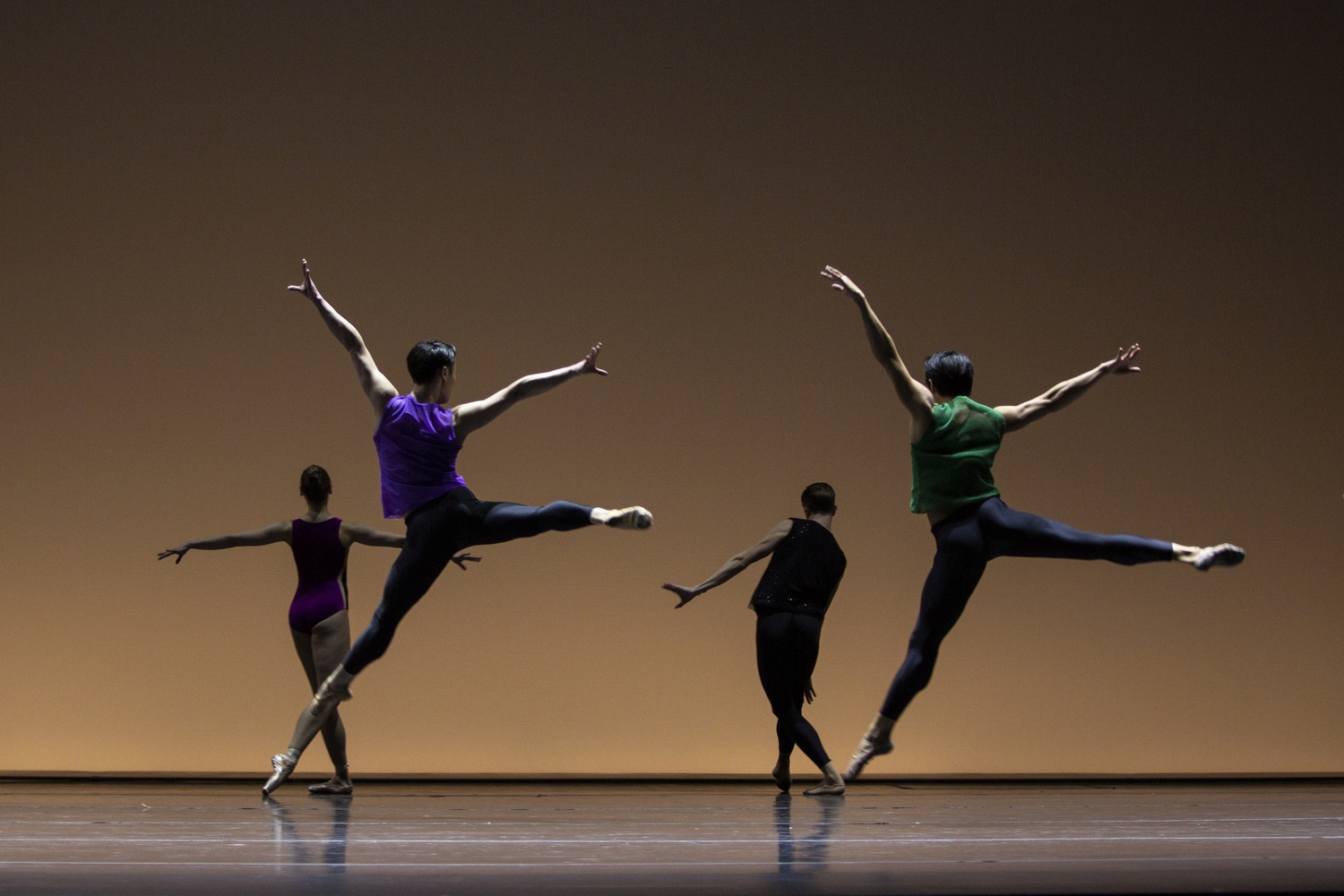
News
Cambridge Residents Slam Council Proposal to Delay Bike Lane Construction

News
‘Gender-Affirming Slay Fest’: Harvard College QSA Hosts Annual Queer Prom

News
‘Not Being Nerds’: Harvard Students Dance to Tinashe at Yardfest

News
Wrongful Death Trial Against CAMHS Employee Over 2015 Student Suicide To Begin Tuesday

News
Cornel West, Harvard Affiliates Call for University to Divest from ‘Israeli Apartheid’ at Rally
Boston Ballet’s ‘Full on Forsythe’ Breathes Innovation and Excitement into Ballet

Boston Ballet’s new show “Full on Forsythe” showcases the most recent works of American choreographer and innovative genius William Forsythe. After a long career in Europe, Forsythe created a piece for Boston Ballet called “Playlist (EP),” the first work he has choreographed for a North American company in almost 30 years. The show, which runs March 7 through March 17, also includes last year’s experimental “Pas/Parts” and “Blake Works I.” Due to its magnificent group of dancers and sublime choreography, Boston Ballet’s “Full on Forsythe” is a triumphant delight that celebrates both Forsythe’s innovations and its performers’ intensive energy.
With its spectacular ’80s voguing-inspired movements, “Playlist (EP)” is easily the most exciting work on the program. It is no easy task to choreograph to both Barry White’s sultry and fun “Sha La La Means I Love You” and Lion Babe and Jax Jones’ club track “Impossible” and still call it classical ballet, but Forsythe has accomplished this feat. “Playlist (EP)” is marked by chasses, glissades, and fanning arms that merge into a endless array of swinging, conga-like hips. At times, the performance feels like a scene from “Paris is Burning.”
The ’80s influence brings a much needed and unexpected freshness to the art form. On some level, it instantiates a sense of humor because ballet stands in such contrast to the wild movements of disco. Yet it also demonstrates that there are unexpected similarities to be found between pop dancing and classical ballet. A number of chugging movements and flowing arms, for example, recall “Phlegmatic” from Balanchine’s “Four Temperaments.” And Kathleen Breen Combes’ tongue-in-cheek, Michael Jackson-like shift onto the tops of her toes is, in essence, a simple bend while balancing on the pointe shoes’ block.
Forsythe has always been known to push the boundaries of choreography with dances full of chaotic formations and movement, which eventually converge into recognizable motifs and ordered canons. “Pas/Parts,” as Boston Ballet demonstrates, is no exception. The work comprises a series of 20 quickly-paced divertissements including solos, duets, trios, quartets, and ensemble movements for 14 dancers. The steps are at their heart classical, but oddly-angled, inverted arms and turned-in knees speak to its contemporary influence. Dancers move fluidly between each style, such that at times it becomes difficult to differentiate between them, lending modernity and effortlessness to the work.
“Pas/Parts” is set to a maximalist, dissonant soundtrack, including reversed shrieks, mambo music, and even Mongolian throat singing, that ingrains a steady heartbeat in the work. Eventually, the once-jarring sounds become monotonous and appear to fade into the background, allowing the viewer to focus on the dancing. Of particular note is “11,” a syncopated duet between female dancers Ji Young Chae and Seo Hye Han, who dance with sensuousness and strength. “16,” led by the epic Misa Kuranaga and Patric Palkens, is also remarkable due to the partners’ intense interconnected movements, moving flawlessly as two parts of one whole.
The “Blake Works I” sequence, a delicate mix of classical and modern dance set to seven James Blake electronic songs, was also incredibly refreshing. The piece’s most stunning performances are set to the synth-heavy “Two Men Down” and the heartbreaking “The Colour in Anything.”
In “Two Men Down,” seven male dancers are eventually joined by all the women of the piece. In this fast-paced and footwork-heavy piece, rapid arm movements melt into slow extensions. What begins as chaos — male dancers stagger across the stage haphazardly, moving feverishly in offbeat fashion — quickly turns into a series of canons and then one final, synchronized mass of dancers performing an allegro. Derek Dunn’s dancing here is particularly fabulous, as he makes his splendid leaps and bouncing turns blend together into one movement. The dancers on the whole expertly handle the progression from chaos to order as they anchor the wild movements with phenomenal levels of control.
In “The Colour in Anything,” the wildly talented Chyrstyn Fentroy and Roddy Doble take on the role of lovers caught in some sort of miscommunication. Their movements are initially synchronized, but become separated in the form of a lag. Fentroy’s grace and Doble’s strong stage presence make the performance particularly convincing. Though there is no explicit story to this dance, their combined energy and longing looks seem to form one.
Overall, the nuanced performances and Forsythe’s tremendously innovative choreography form the heart of this fantastic show. With his perfectly fused hybridizations of ballet and ’80s culture, Forsythe has really outdone himself. One only hopes that this new choreography leads to many more new works.
—Staff writer Aline G. Damas can be reached at aline.damas@thecrimson.com.
Want to keep up with breaking news? Subscribe to our email newsletter.
